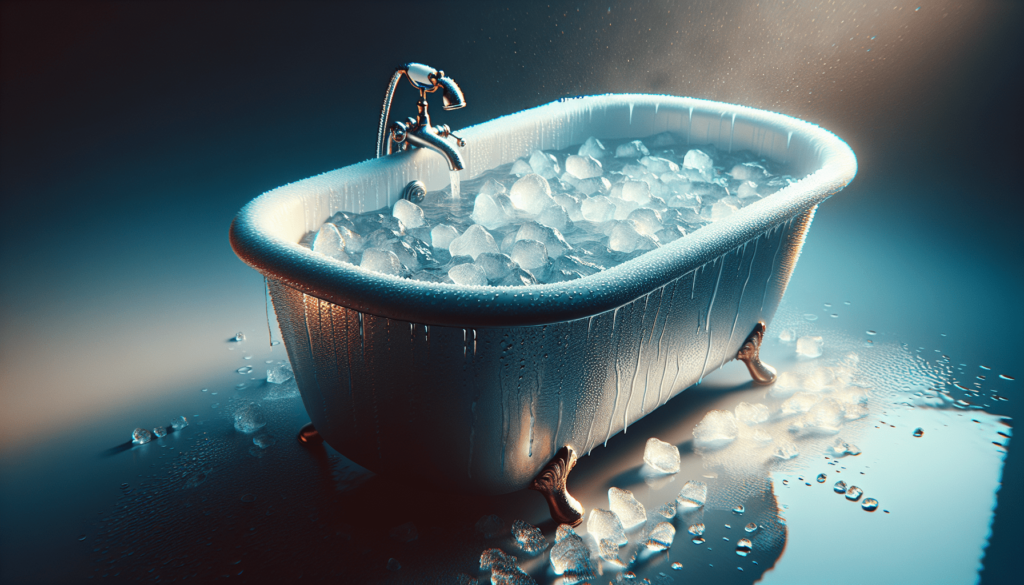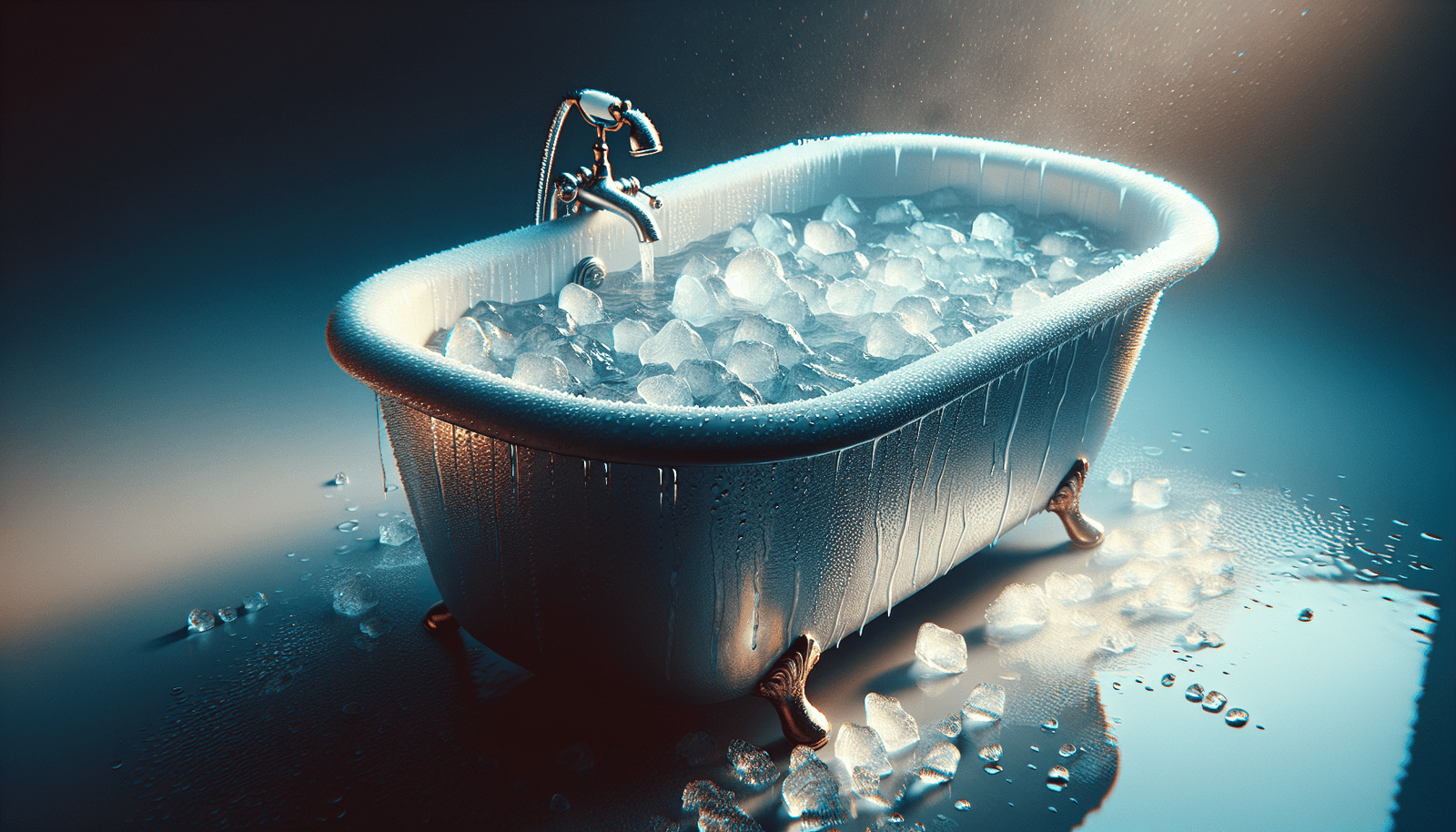Have you ever wondered how long you should cold plunge in the bathtub? It’s a question that often arises when trying to reap the benefits of this invigorating practice. Cold plunging has gained popularity in recent years for its potential to improve circulation, reduce muscle inflammation, and boost overall well-being. But finding the optimal duration can be a daunting task. In this article, we’ll explore the factors to consider and provide some guidelines to help you make the most of your cold plunging experience. So, if you’re ready to take the plunge, read on to discover how long you should stay in the bathtub for maximum benefits.

Factors to consider
When it comes to taking a cold plunge in the bathtub, there are several factors you should consider. These factors include your body temperature, the temperature of the water, and your personal health and fitness level. By taking these factors into account, you can ensure a safe and enjoyable cold plunge experience.
Body temperature
Before diving into a cold plunge, it’s important to take your body temperature into consideration. If you’re starting with a normal body temperature, you may have a different experience compared to starting with a fever or high body temperature.
Starting with a normal body temperature
If your body temperature is within the normal range, typically around 98.6°F (37°C), you can expect the cold plunge to have a refreshing and invigorating effect. Cold water can help lower your body temperature, providing a sense of rejuvenation and wakefulness. You may find that a short cold plunge leaves you feeling revived and ready to take on the day.
Starting with a fever or high body temperature
If you are experiencing a fever or have a high body temperature, it is generally recommended to avoid cold plunges. Cold water can potentially worsen your symptoms and make you feel even more uncomfortable. It’s best to wait until your fever has subsided or your body temperature returns to normal before attempting a cold plunge.
Water temperature
The temperature of the water you use for your cold plunge is an essential consideration. Different water temperatures can have varying effects on your body.
Cold water temperature
Cold water typically refers to water that is around 59°F (15°C) or below. Taking a plunge in cold water can provide a shock to your system, effectively stimulating your blood flow and increasing your heart rate. This can lead to a rush of endorphins, leaving you feeling energized and mentally alert.
Ice water temperature
For those seeking an even more intense cold plunge experience, ice water can be used. Ice water, with temperatures below 32°F (0°C), can offer a more extreme sensation. The freezing temperature of the water can intensify the physical and mental benefits, providing a truly invigorating experience. However, it’s crucial to exercise caution when using ice water and to monitor your body’s response closely.
Personal health and fitness level
Another essential factor to consider is your personal health and fitness level. Your overall well-being and fitness can impact how your body responds to a cold plunge.
General health condition
If you have any pre-existing health conditions, it’s crucial to consult with your healthcare provider before attempting a cold plunge. Conditions such as cardiovascular issues or respiratory problems may require extra caution or even contraindicate cold plunges altogether. It’s always better to prioritize your health and safety.
Cardiovascular health
Your cardiovascular health plays a significant role in determining how your body handles a cold plunge. Cold water immersion can cause a temporary increase in heart rate and blood pressure. If you have a history of heart problems or have concerns about your cardiovascular health, it’s advisable to consult with a medical professional to ensure it is safe for you to engage in cold plunges.
Existing medical conditions
Apart from cardiovascular health, there may be other medical conditions or injuries that need to be taken into account. Conditions such as Raynaud’s disease, asthma, or diabetes may require special attention or medical advice before attempting a cold plunge. Being mindful of your unique health circumstances is essential for a safe and enjoyable experience.
Fitness level
Your fitness level can also influence how your body reacts to a cold plunge. If you are regularly active and have a good level of physical fitness, you may find that your body adapts more quickly to the cold water. On the other hand, if you are less active or have a lower fitness level, you may need to start with shorter durations and gradually work your way up.

Recommended cold plunge duration
When it comes to how long you should stay in a cold plunge, it’s essential to start slowly and listen to your body’s cues. Recommended durations can vary depending on your individual factors and tolerance levels.
Ranging from 30 seconds to 2 minutes
For beginners or those with a lower tolerance to cold water, starting with durations as short as 30 seconds is recommended. As you become more accustomed to the cold, you can gradually increase the duration to 1-2 minutes. This range allows your body to adjust and reap the benefits of the cold plunge without overwhelming it.
Gradually increasing duration over time
It’s important to note that you should not push your body beyond its limits. Instead, gradually increase your cold plunge duration over time. Adding a few seconds or a minute to each session can help you gauge your body’s response and prevent any sudden shocks or discomfort.
Starting with shorter durations
When beginning your cold plunge journey, it’s essential to determine a comfortable duration for your sessions.
Determining a comfortable duration
To find a comfortable duration, start with a short cold plunge session of around 30 seconds and assess how your body reacts. If you feel comfortable and energized, you can try extending the duration slightly in subsequent sessions. Listen to your body and adjust accordingly.
Listening to your body’s response
Throughout your cold plunge, pay attention to your body’s signals. If you experience any severe discomfort, pain, or shortness of breath, it’s crucial to exit the cold plunge immediately. Pushing your body beyond its limits can lead to adverse effects or even injury. Always prioritize your well-being and take breaks as needed.
Gradually increasing the duration
Once you have established a comfortable starting point, you can gradually increase the duration of your cold plunge sessions.
Progressing from 30 seconds to 1 minute
After several sessions of starting with 30 seconds, you can begin adding a few seconds to your cold plunge duration. Progressing to 1 minute can help your body adapt to the cold water and start experiencing the benefits.
Extending to 1-2 minutes
As your body becomes more accustomed to the cold plunge, you can extend the duration to 1-2 minutes. However, it’s essential to monitor how your body responds during these longer sessions and adjust accordingly. If you start experiencing discomfort or strain, it’s advisable to shorten the duration or take a break.
Monitoring physical reactions
Throughout your cold plunge sessions, pay attention to your body’s physical reactions. Your skin may turn red initially, but it should return to its normal color within a few minutes after exiting the cold water. If you experience prolonged redness, numbness, or any other concerning symptoms, it’s essential to seek medical advice.
Importance of easing into cold plunge
Taking a gentle and gradual approach to cold plunges is crucial for numerous reasons.
Avoiding sudden shock to the system
Subjecting your body to sudden extreme cold can put unnecessary stress on your system. By easing into cold plunges, you allow your body to adapt and adjust to the temperature changes more effectively. This gradual process promotes a safer and more enjoyable experience.
Adjusting to the cold gradually
By slowly exposing your body to cold water over time, you train your circulatory system to respond more efficiently. Your blood vessels constrict and dilate appropriately, enhancing circulation and promoting overall cardiovascular health. It also allows your body to acclimate to the cold more easily, potentially reducing the initial discomfort.
Effects of longer cold plunge durations
As you extend the duration of your cold plunges, you may experience additional benefits.
Increased benefits to the circulatory system
Longer cold plunges can enhance blood circulation even further. The cold water stimulates your blood vessels to constrict and dilate, promoting healthy circulation and boosting your cardiovascular health. This increased blood flow can have positive effects on your overall well-being.
Enhanced muscle recovery
Cold plunges, especially when prolonged, can aid in muscle recovery. The cold water helps reduce inflammation and muscle soreness, accelerating the recovery process after intense workouts or physical activities. It can also assist in reducing the buildup of lactic acid, potentially enhancing your athletic performance.
Boosted immune system
Cold water immersion has been linked to a temporary increase in white blood cells, which are essential for a robust immune system. By exposing your body to the cold for longer durations, you may potentially strengthen your immune response and overall immune function.
Listening to your body
Throughout your cold plunge journey, it’s crucial to prioritize listening to your body and respecting its limits.
Not exceeding personal limits
Every individual has their own tolerance and limits when it comes to cold water immersion. It’s important to recognize and respect these limits. Pushing yourself excessively can lead to discomfort, increased risk of injury, or other adverse effects. Be mindful of your body and stay within your personal boundaries.
Recognizing signs of discomfort or distress
Your body will provide signals if it’s experiencing discomfort or distress during a cold plunge. These signs may include shivering, numbness, dizziness, or difficulty breathing. If you notice any of these symptoms, it’s crucial to exit the cold water immediately and warm yourself up. Your safety and well-being should always be the top priority.
In conclusion, the duration of a cold plunge in the bathtub can vary depending on several factors. Your body temperature, the temperature of the water, and your personal health and fitness level should all be taken into account. Starting with shorter durations and gradually increasing them over time is recommended. By listening to your body and respecting its limits, you can enjoy the benefits of cold plunges while ensuring a safe and enjoyable experience.

